-
8th May 2014, 04:50 PM
#661
-
8th May 2014, 04:58 PM
#662

Note the rust hole which needs to be fixed in the above pic
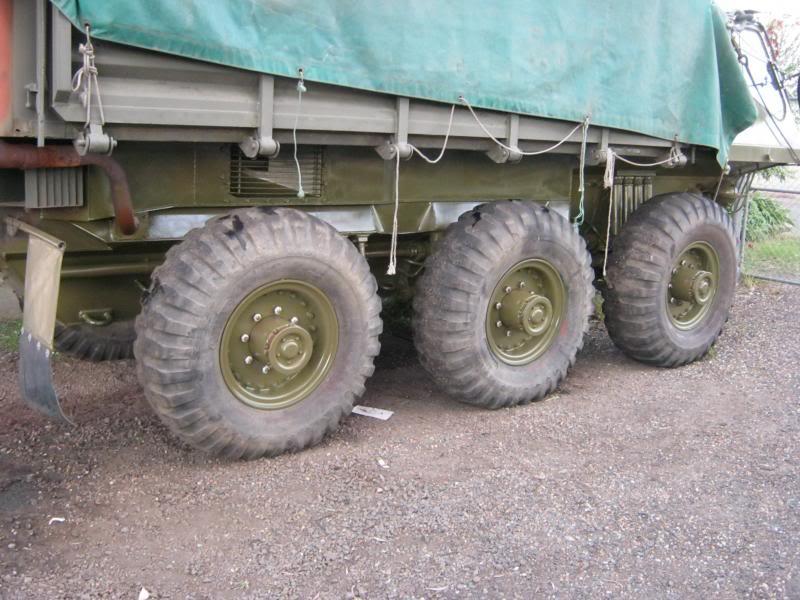
Back on all six wheels
Three done and another three to go.
I am going to refill the 38 litres of gear oil for the central lube tank and take the thing for a run before attacking the left hand side wheel stations for paint and problems.
I need to have a bit of fun in the thing.
Days are now short and cooler so I only have a 30 min period after work to do things on the beast before I run out of light.
Brakes still need to be bleed too.
-
8th May 2014, 05:08 PM
#663
I crawl under the vehicle only using the jack and no safety stands as it is no big deal as the vehicle will balance well if any wheel is removed.
another thing which may be of interest is so far all painting on this vehicle including the red oxide has been done with a small touch up spray gun.
The reason is I can only do things a bit at a time and only need to do small areas of the vehicle at one time.
The small spray gun allows better access to different parts of the vehicle.
I will when I think I have mostly finished the vehicle give it a final sand back on some of the roughest areas I have done and finish off every thing with a big spray gun all at the same time as one normally would.
-
8th May 2014, 05:12 PM
#664
[ame=http://www.youtube.com/watch?v=YJeE7A59VEY]Alvis Stalwart Group in the Lake's - YouTube[/ame]
They are noisey riding in the back when afloat with the engine screwed up to 3000 RPM.
Taken from a MK 1 stalwart .......note the water bleed /bilge pouring over the side from the water jets which doesn't happen on a MK2 which relies totally on the hand and electric bilge pumps.
Mk 1s have a much simpler roof hatch locks and most likely a better set up.
I was thinking of where and how to fit a amber rotary safety light to the front of the vehicle...........this stalwart has a good idea of just using a magnetic one on the cabin wave deflector.....so simple..........still learning all the time.
-
22nd May 2014, 06:22 PM
#665
-
22nd May 2014, 06:35 PM
#666
The above is me just giving the old girl a run after knock off time at work.
The oil leaks appeared to have stopped for the time been.
I now have a bad coolant leak from the heater core in the cabin.
The heater core leaking was expected as it was all disconnected when I got the Stalwart.
To drive the vehicle more I need to fix it next.
I could if I tried hard get the stalwart to the farm for a army truck rallie and off road adventure June long weekend.........I will play thing things safe.........always next year and I have plenty of other toys to take.
A vehicle like the Stalwart needs to be driven regularly to keep all the oil seals working and not dried out.
Heater core and then the next three wheel stations..........inspect, replace hoses and needle gun and paint.
I have found out the stalwart will gravity bleed its brakes given time.....handy when you have no one around to help.
-
22nd May 2014, 06:37 PM
#667
Just a interesting fact is when manufactured, the weld length total of a Stalwart is over 1600 ft and CO2/MIG type welding was mostly used and was a new type of welding for the time in the UK.
I have conflicting information about the type of steel used.
The best so far is the prototypes were mild steel and then a ideal, but unusual steel called Cor-ten which works a bit like aluminium in that it gets a oxide coating on its surface and stops its self from rusting was used for a few early stalwarts.
Cor-ten was stopped being manufactured in the UK so most of the Stalwarts are made from BS968 steel which does have some problems with welding it correctly.
I think a bridge in Melbourne collapsed when the welds failed in cold weather using BS968 and stick welding.
MIG welding allowed different types of joints to be used to the previous Alvis vehicles saving time and money.
The stalwart has most likely something like a Hundred studs welded to the inside of the Hull to hold pipes and wiring looms etc done by a automatic surface gap stud welder.
The vehicle hull was welded in a rotating jig for access.
Oxy acetylene has been used on the roof hatch lock housings and some other small fittings thought out the vehicle.
Most pipes thought out the vehicle and a lot of other stuff has small silver plates stamped with a part number and that plate is soldered on to the part.
Ron
-
22nd May 2014, 08:49 PM
#668
How cool does that engine sound?  So much more fun than a poxy diesel!
So much more fun than a poxy diesel!
Cheers Charlie
-
23rd May 2014, 06:36 AM
#669
It doesn't sound too good in the cabin at present.
With the load area floor plates out the fan noise is dominate.
From out side the vehicle to people watching it sounds very cool.( exhaust noise)
The Rolls B81 is very quiet and smooth with the add ons making the noise.
With the floor plates out there is no forced air draught around the engine and the exhaust system becomes very hot and is another reason not to operate it for a long distance while I am still doing a lot of work on it.
-
28th May 2014, 08:41 PM
#670
Ron
I stumbled upon these 67 pages of this thread on saturday just gone and have steadily been working my way through the thread till this point.
Very admirable what you have accomplished so far.
I can see it has been a very demanding project for you, and continues to be, but as others have said, I am sure that when it is completed, you will stand back and grin, though that may take a while!
I have a little to add that may be of interest.
My father was in the British Army - in the Cavalry and they had Stalwarts or Stolly's for resupply of the Chieftains. As I saw earlier, HMLC - High Mobility Load Carries. Whether the regiment had them or the RLC or some other part of the army, I dont know.
He said that they would have a series of railway sleepers chained together that they would drive over in order to unwind the drive train. As I have learnt in this thread, not as necessary as thought.
I have only seen one reference too the white lines on the hubs. As you said, they were for checking the oil level. Dad said that they were for ensuring the hubs were all in-sync. Presumably related to the wind up of the drive train.
It seems to me that the Stalwart is a very over complicated piece of british equipment, not unusual I think. The difference is with this one and other vehicles of the similar familiar, they were surprisingly successful.
The lube of all the pivot pins and similar parts being oil and not grease. the very specific PSI of the tires and the diameter.
I think that there would be easier ways to set up the drive train and I am sure that the designers did consider alternates. I suspect they went with the way they did to reduce the number of THF (thru hull fittings), but it does seem overly complex.
I am impressed by the suspension system, supple enough to float over kerbs and the like yet rigid enough to lift the forklift with little roll.
I cant remember for sure but I would say between 1993 and 1996, just up the road from where I grew in the uk - about 40km away - was a dealer who purchased ex-MoD equipment. Dad an I went looking at Land Rovers and dad got all excited as there were 3 maybe 4 Stalwarts parked up in barn.
Keith Gott was the dealer Keith Gott Land Rovers
a quick look at the website shows they are still active but seem to only have LR now.
I did have a thought about your tire problem - availibility of them.
It may be possible to obtain some tires used on aircraft. Though there are many sizes and diameter is critical, it may be an alternative to save your bar treads.
If you send me the hub bead diameter, wheel bead width and out side diameter, I may be able to get some suggestions as to an alternative and what they are installed on. I hope that may help and contribute to your project. However the cost and sourcing another set of hubs may be cost prohibitive.
All the best with your project and I shall continue to follow this thread.
Hay Ewe
 Posting Permissions
Posting Permissions
- You may not post new threads
- You may not post replies
- You may not post attachments
- You may not edit your posts
-
Forum Rules
Search AULRO.com ONLY!
|
Search All the Web!
|


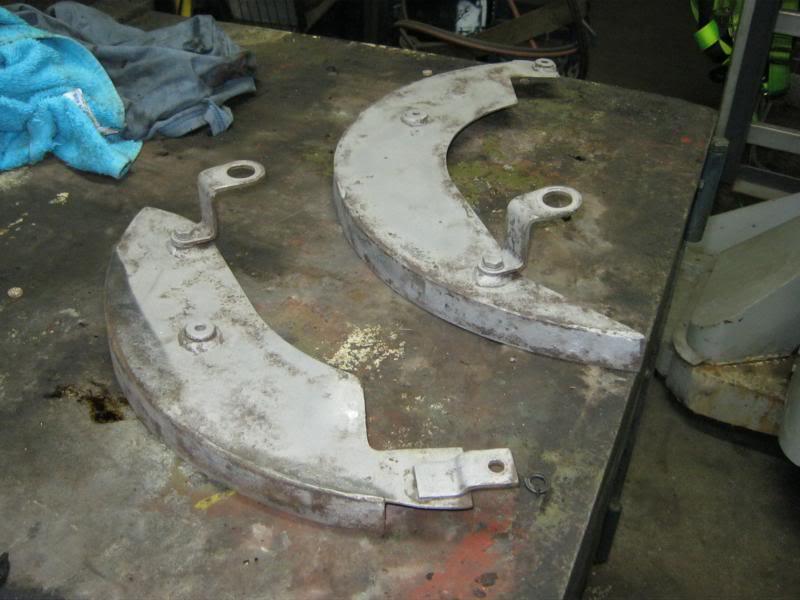
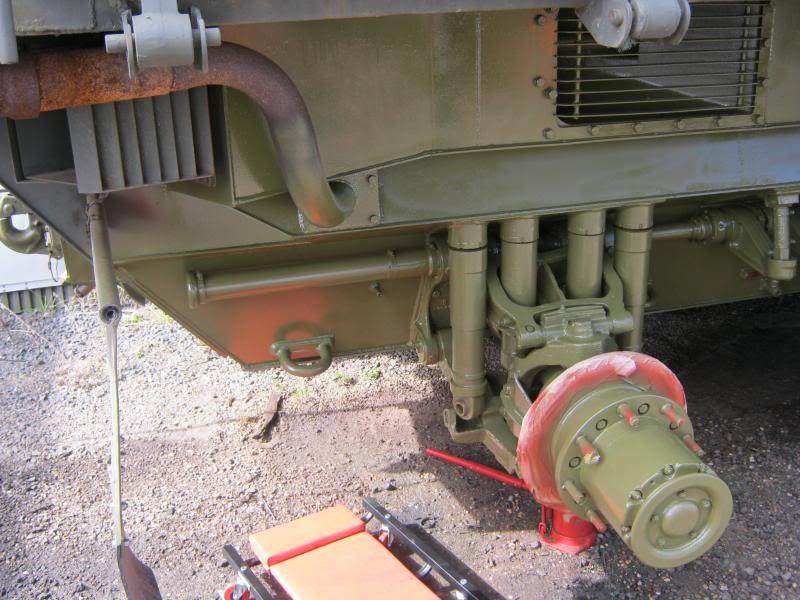
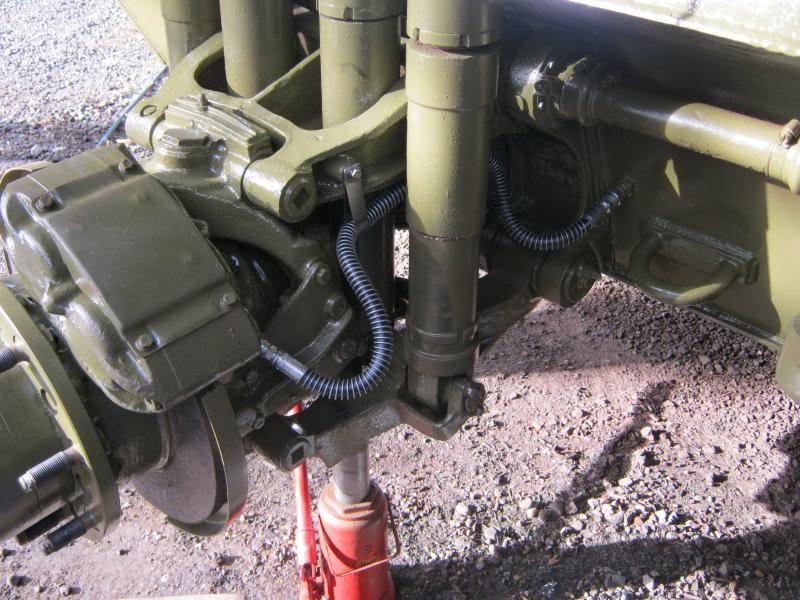
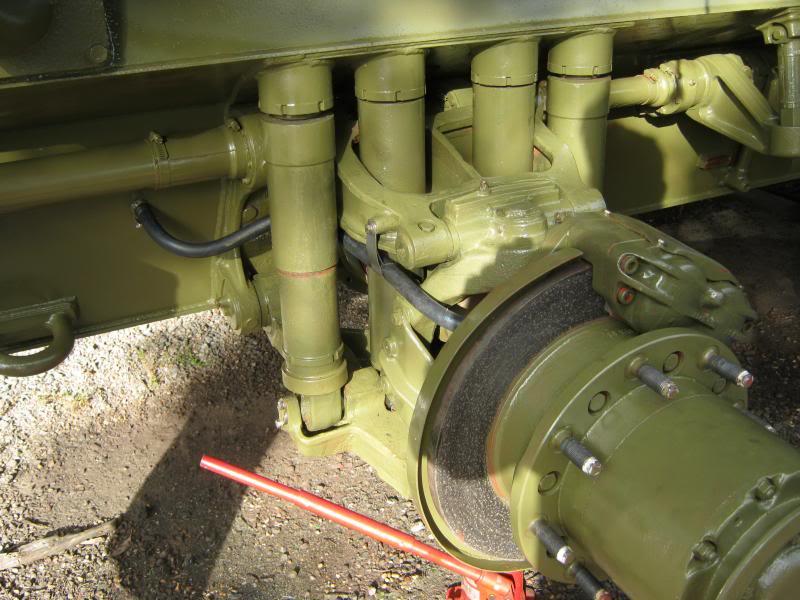

 Reply With Quote
Reply With Quote

 So much more fun than a poxy diesel!
So much more fun than a poxy diesel!
Bookmarks